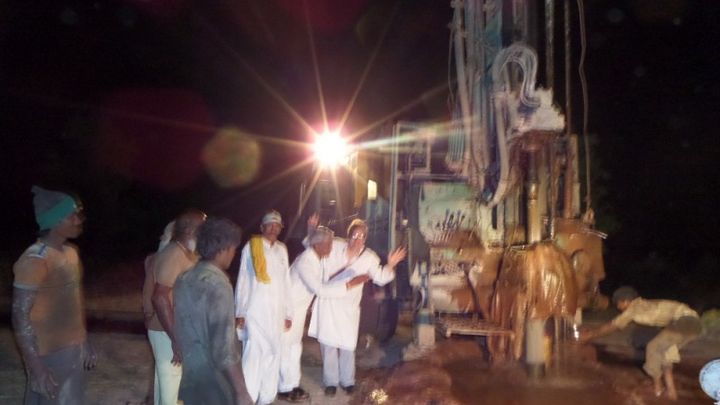
3 Wells in Indian Villages + Slums
Donation protected
Our primary goal is providing water in places of need. The older and shallower wells are drying up in in some areas. Having a perpetually functioning public well within their own small village greatly increases the daily quality of the life for hundreds of humble Indian villagers. A well can also create one or more farms (which has been done with our first well). The existing upper water table's shallow wells are becoming exhausted or dry in various regions of India. Now the villagers who live where we created a new, deeper well will no longer have to make long walks, bicycle, motorcycle trips or drive (only a few people have cars in the village)... to get their daily water for drinking, cooking, animals, etc. These deep water wells will provide pure water for decades.
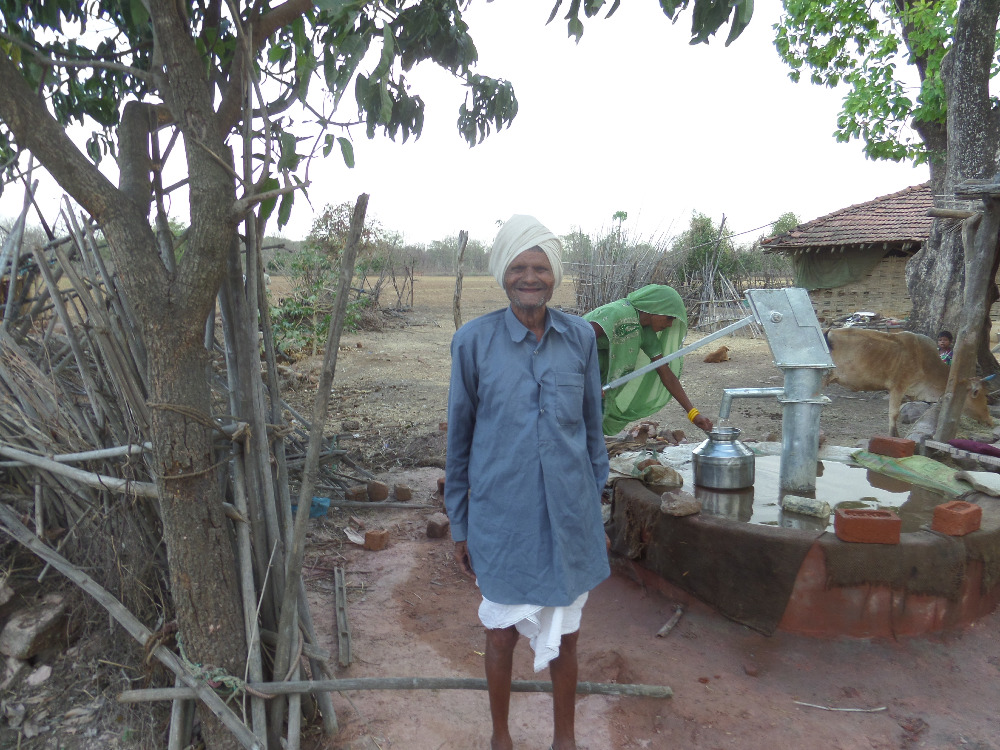
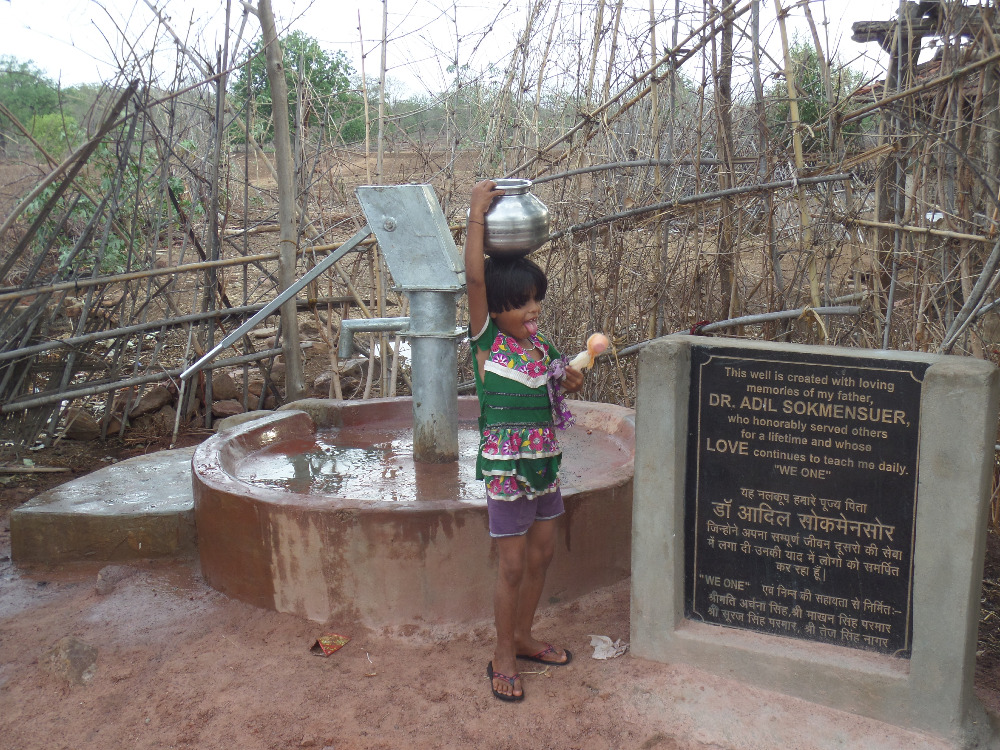
The photos above and below are from our last trip to Bhopal, India where we successfully completed 2 deep water wells in areas of water scarcity and emergency and placing a pump on one previously drilled old emergency well in case of electrical shortage where we provided a motorized pump. Our team has identified at least 2 locations in desperate need, one in a Bhopal slum and one in an impoverished village where WE ONE will drill at least two wells on my next trip to India in July. Of course, I would like to raise enough money to drill more than just two.
Drilling for water is very strenuous and exciting work. We work through the night when temperatures are cooler. The contractors from the government are allowed to give up drilling after 250 feet (deep, but often not deep enough). We drill up to 500 feet. That is one of the reasons people are helping us to get this done at such a low cost. We found one pure source at 250 feet deep and one at 460 feed deep. And I add, it is a true thrill when this pure water bursts forth !
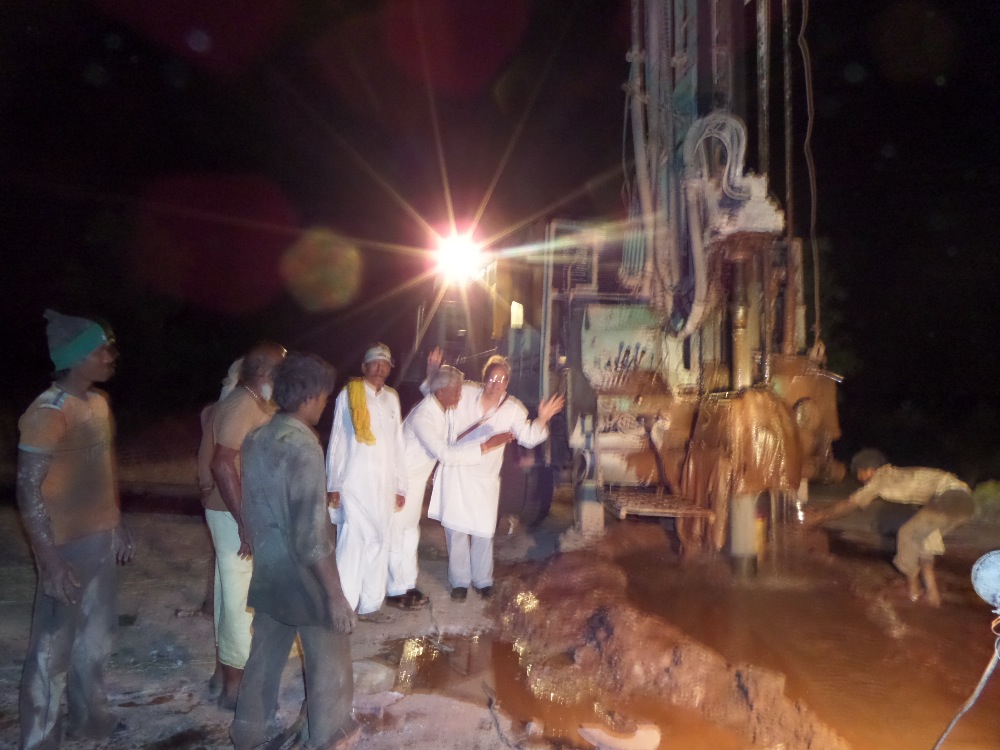
Hi, My name is Kent. My friends call me Thomas. I help make these deep water wells in places of great need in India where, with friends, we are making high quality drilled wells and supply villages or farms for very, very low cost. Please compare on the internet if you feel like it. I helped make WE ONE by selling my home and gardens i worked on for a decade and love dearly. We One is a 501c3 personal foundation which performs service activities. If you are interested in making larger tax deductible donations, please send a private message. Our primary charitable activitity is providing pure water in Indian villages and slums which are under water emergency as the upper water table has become exhausted. For reference to all service activities, you can go to www.weone.us . Presently, we are working with a goverment water board scientist, local elders, farmers, villagers and other professionals in Bhopal where the water crisis is serious. Because of a devoted and favorable network of professionals and locals, and we are drilling high quality deep wells (250 to 500 feet) at the very lowest cost of averaging about $1500 per well including all expenses. Some projects include irrigation too and we split those extra costs with locals. This is about 1/2 to 1/3 what it seems to cost other NGOs.
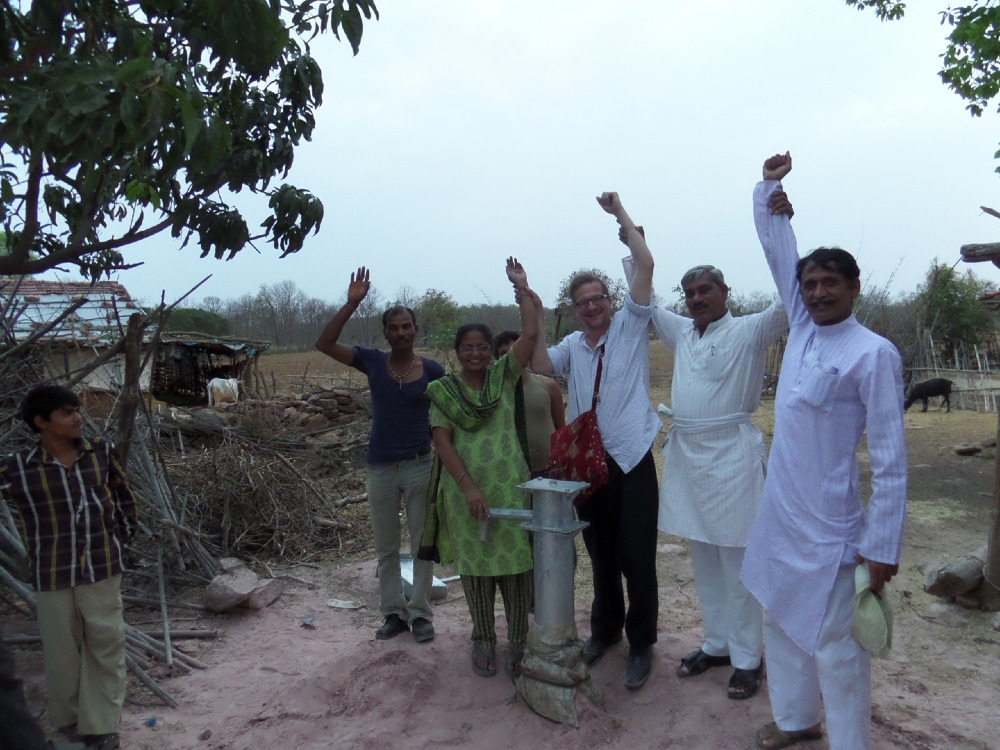
Our network and team in Bhopal includes a government geophysicist, local elders and farming representatives, the baba who runs the villages community center and cow sanctuary, local farmers, workers and residents. Because of the cultural and local support of charitable activities concerning water projects, our drilling company is even driling at "no profit, no loss" cost which allows us to drill well at a lesser cost than the locals could do together without WE ONE and also significantly less than other NGO charities (only $1500 or less per 250 to 500 feet deep well, pump, etc.). At the farm, there were some more costs for irrigation, motors, electronics, etc.
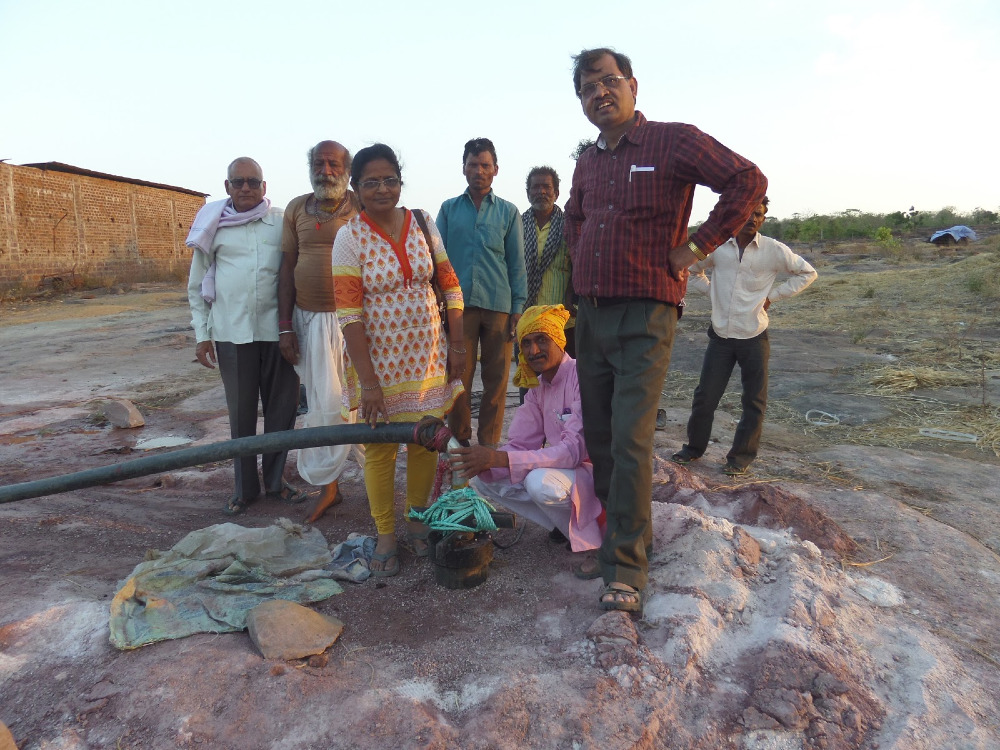
This is the first farm created after our first well at the cow sanctuary/villages hub community center. This section of the farm is for cow fodder to feed cows as cows are central to Indian culture and provide fuel, food, medicine, and at the cow sanctuary even electricity is derived from methane. Now that the farm for cows has been established, a farm for humans, native and medicinal plants and flowers is being grown and established. When I return in July, we plan on introducing a bee colony to the farm (we will make a seperate campaign for this). This villages' community center is the location of local meetings, gatherings, mass wedding, retreats and is on the main road. A cistern is being installed to supply people driving by on the way home or to work. The field below was previously dry and mosly weeds and grasses were growing.

This is what the fields looked like before the irrigation made the growth above. This field has now become a farm for human food (I don't have pictures of it as I have been in the U.S. since it was planted).
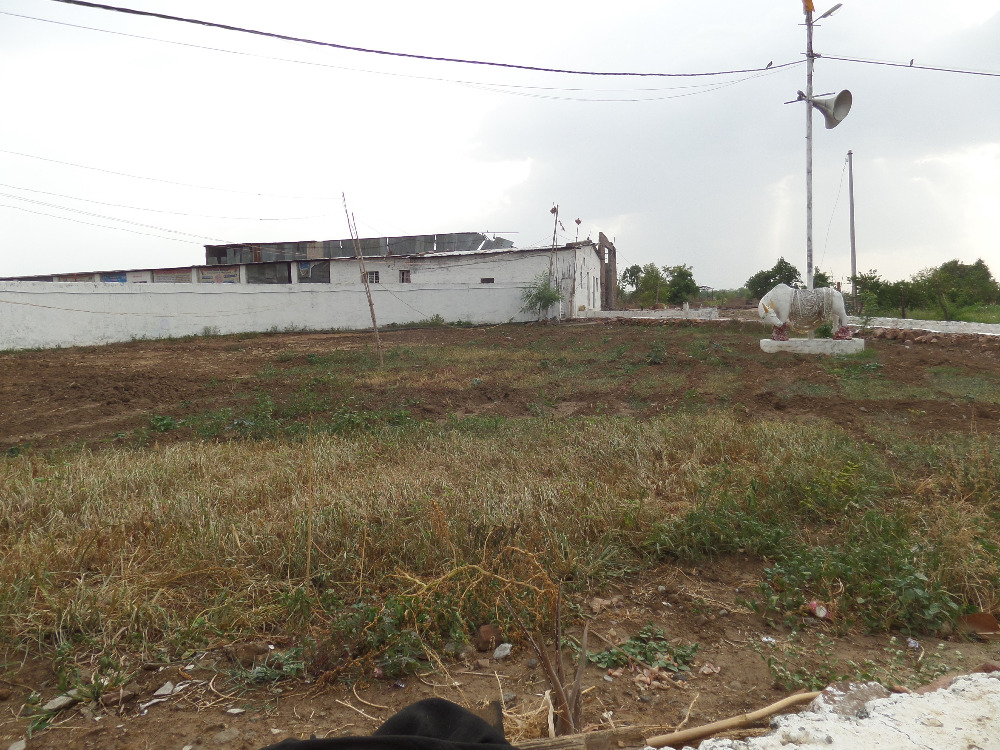
Installing the electrical motor at the villages' hub/cow sanctuary. This was the first day. Later, this equipment was been placed in a wooden containment box constructed for the controls.
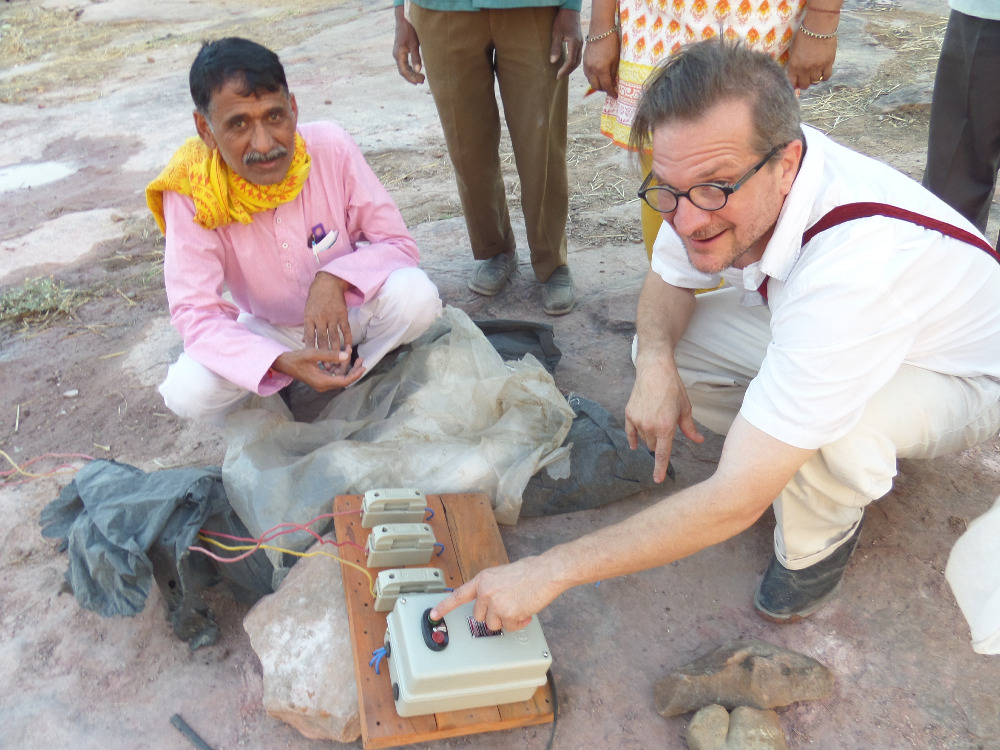
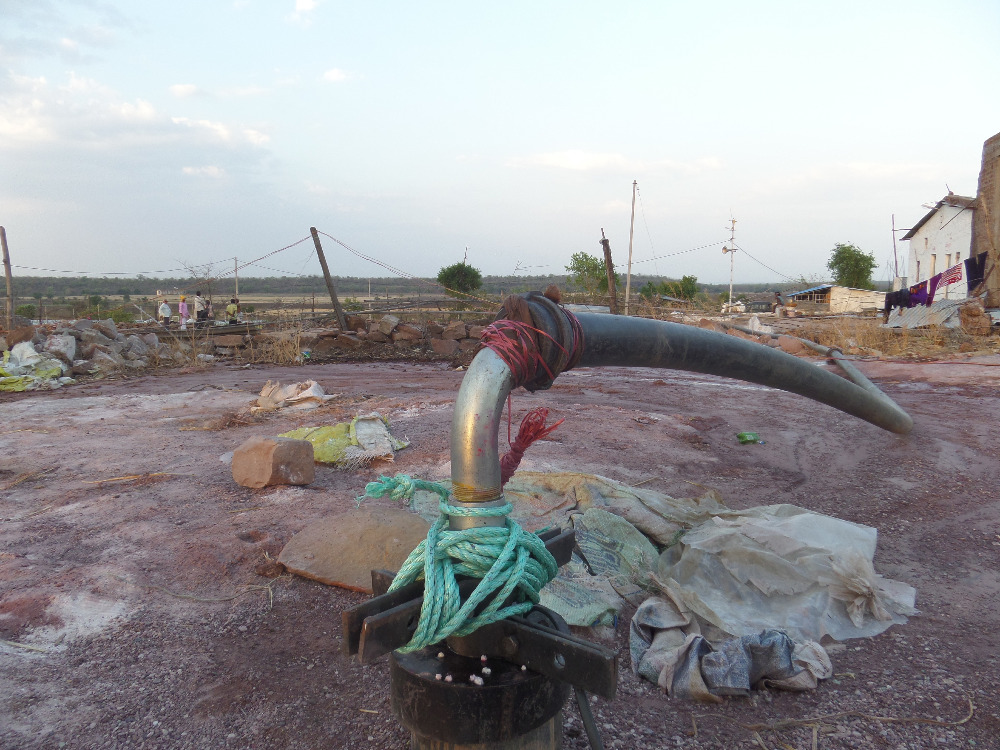
Where the field of aloe plants were dry and the aloe was pink and shrivelled from lack of water, this medicinal and nutritious plant is now flourishing. When I return, we will start experimenting with more nutrioutious staples like purple potatoes, quinoa, amaranth and brown rice to experiment with alternatives with higher nutritive value for India's enormous and expanding population.
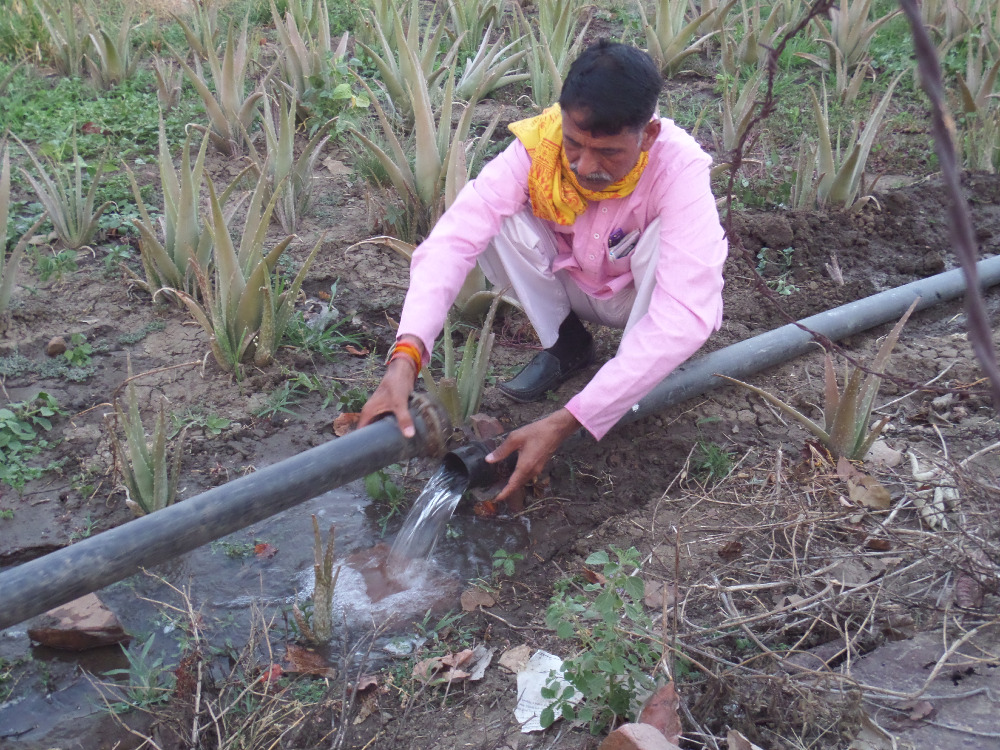
Now the kids in the village can easily come and get water just down the little road rather than the mothers and females (it is usually their duty) having to walk what we would consider to be significant distances at least once daily to get the water for the family.
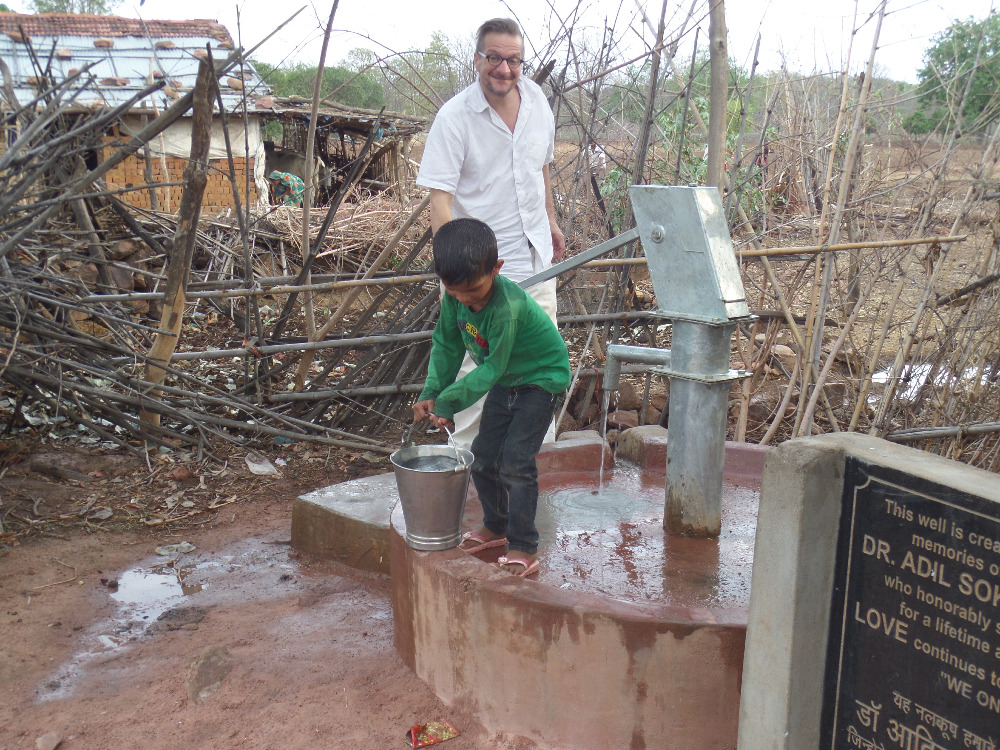
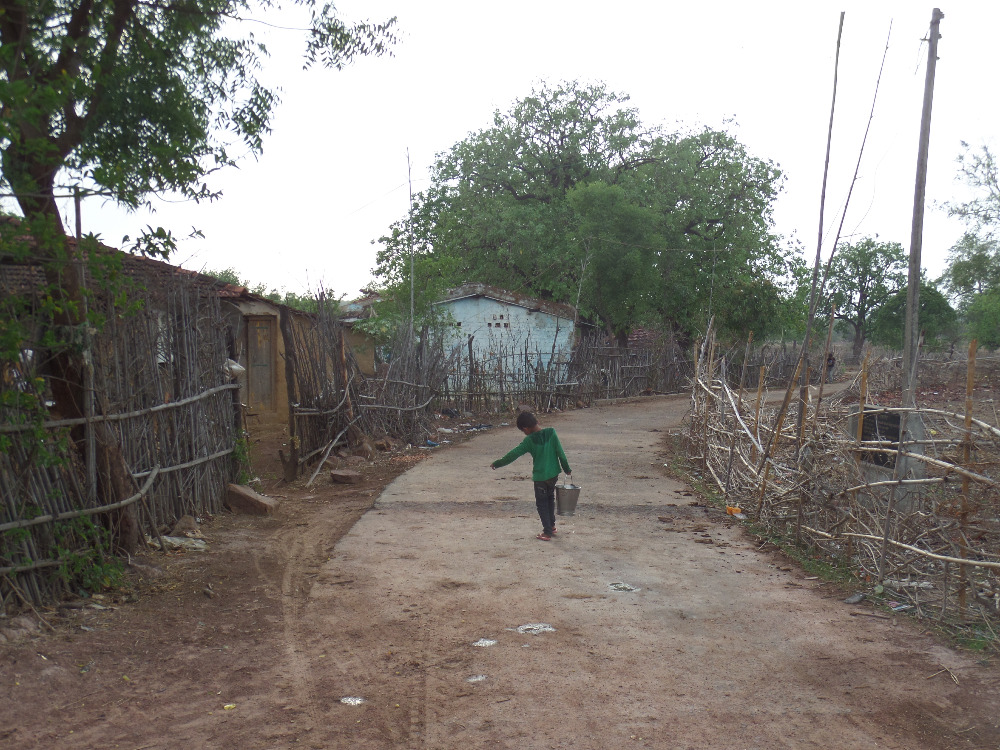
IT'S SWEETWATER ! yay! 460 feet deep !
It is nice for kids to have fresh water after playing. I am assuming this can lead to more playing since water is more easliy available. It is a beautiful and strong well. We made sure this new one was a safe distance from the side of the road. It should give water for at least 20 to 30 years. 460 feet deep, Sweetwater. That is very deep and would be expensive for this small town.
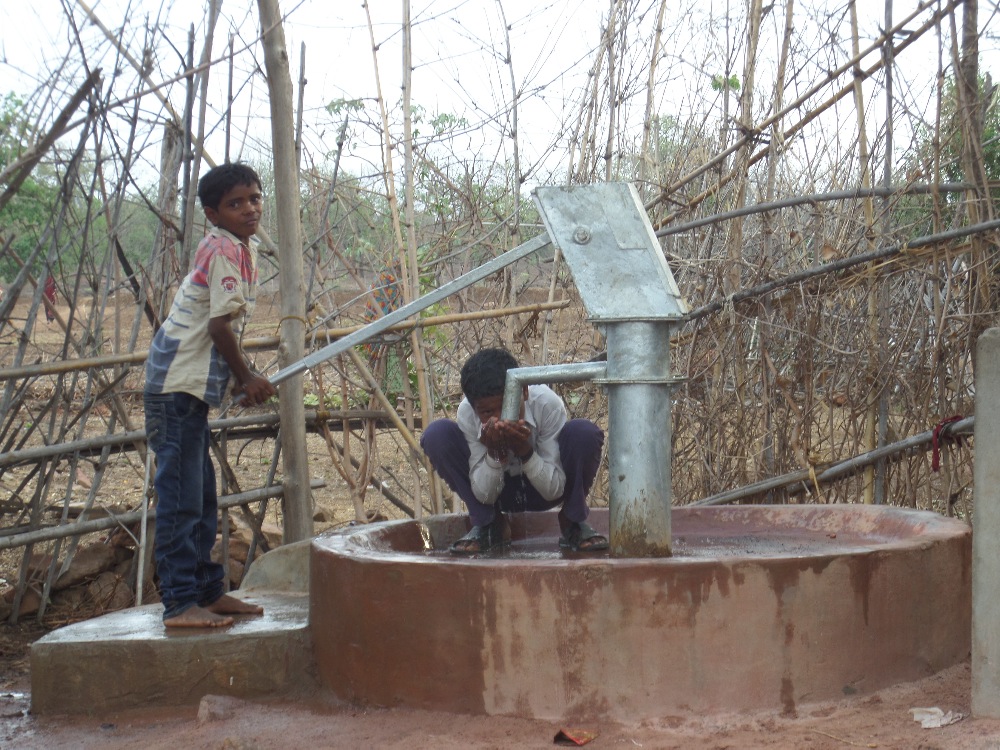
In India, girls are usually sent to fetch water. When we arrived the day after completion, This girl came to get water with a doll in her hand. After this photo, she went and picked up her toy she left on the plaque we made to thank local people (photo above) who assisted and... then she walked home.
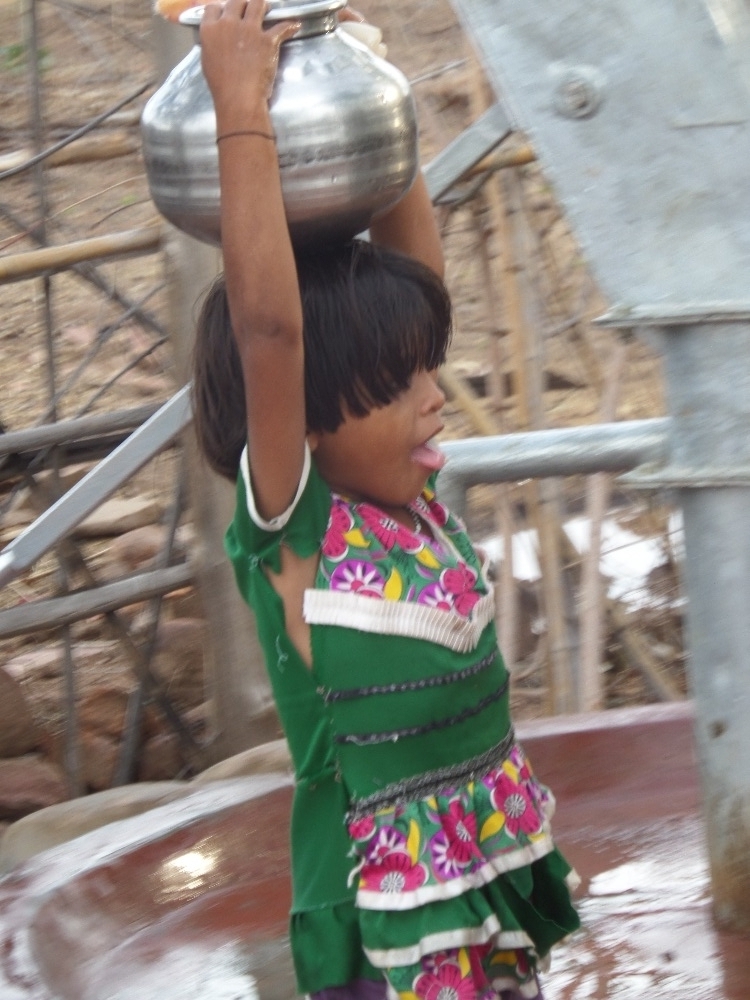
She is holding a toy in her hand, just able to carry it on her head. Interesting.
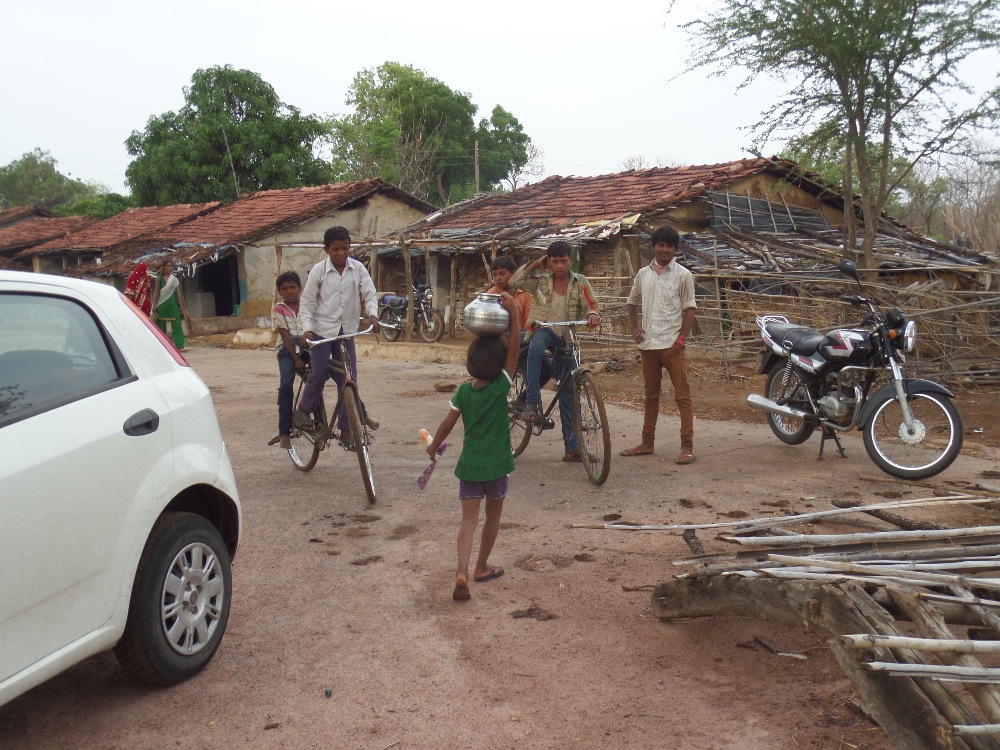
Mrs. Archana Singh of HiGeoTech geophysics company and Dr. Singh, government water board geophysicist, are essential in our efforts and highly respected locally. This is Mrs. Singh inspecting the depth of the new sweetwater well and Javra village's new well which will provide pure water for decades.
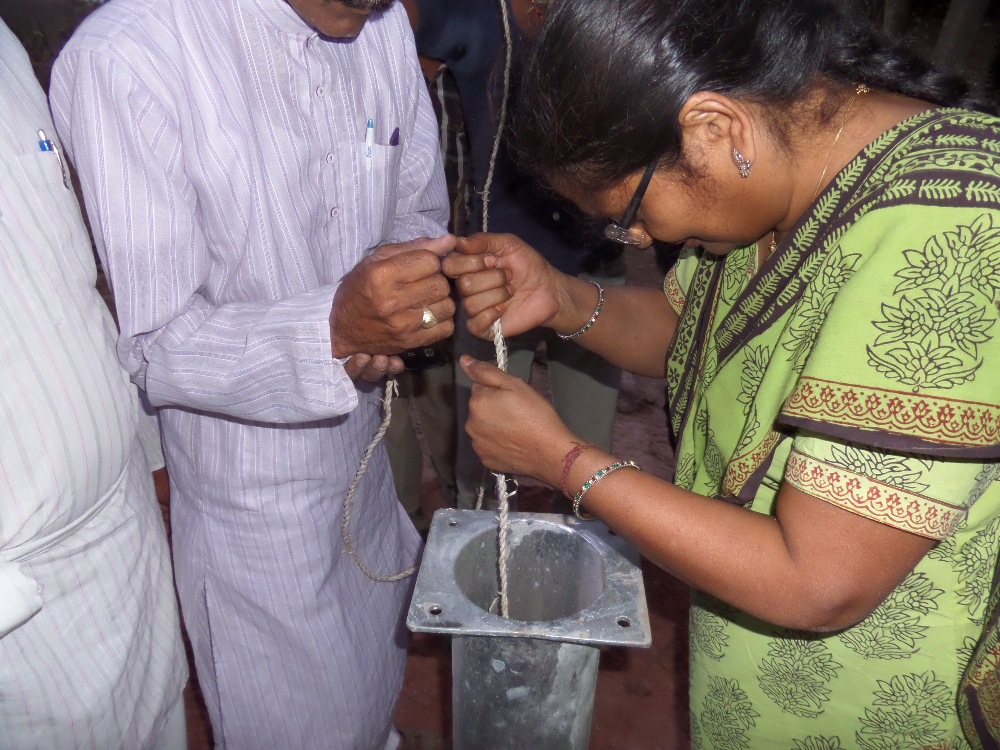
It is beautiful! Right?

This is the dry well at the school down the street. The upper water table has been exhausted. Now the school has water just two hundred meters down the road.
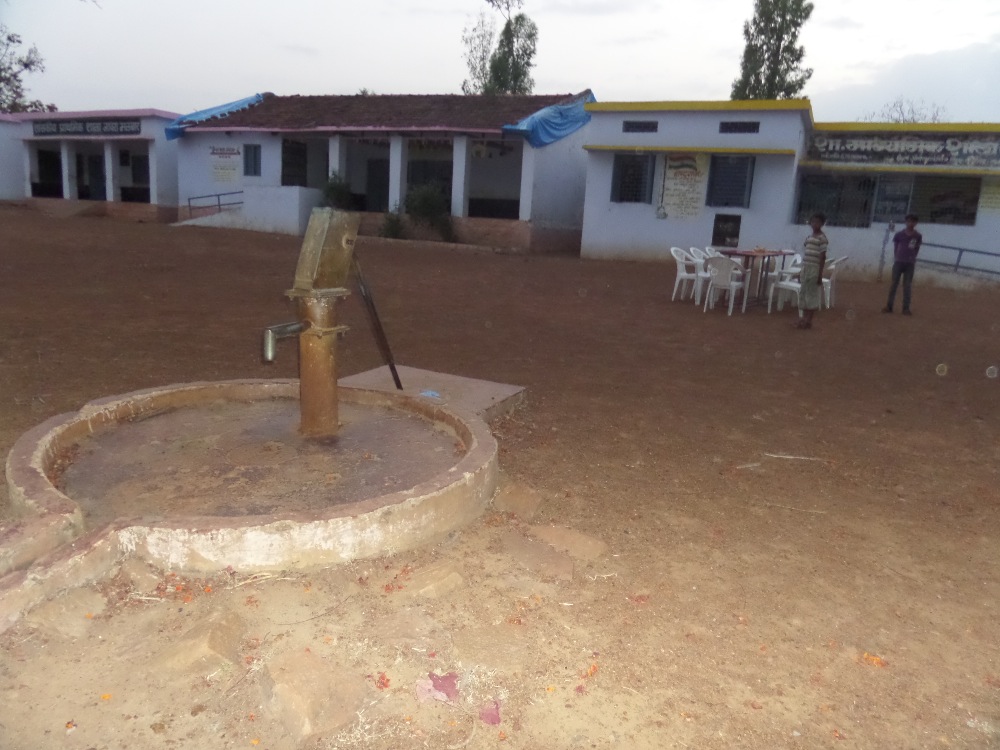
This is the old broken well in center of the village. It may supply water in the coolness of winter sometimes when there is still some rainwater in the upper table, but most of the time, it is useless. It was made way to close to the road. I think a car hit it too. Maybe more than once. Where we drilled the Sweetwater well, I wouldn't leave the spot until I made sure it was being done far enough away from the road. It was an interesting twist, but the next day, the locals thanked me that I made sure it was made farther off the road... Anthropology story, the same but different but the same.

Kids fetching water from the new well just a short distance from home.
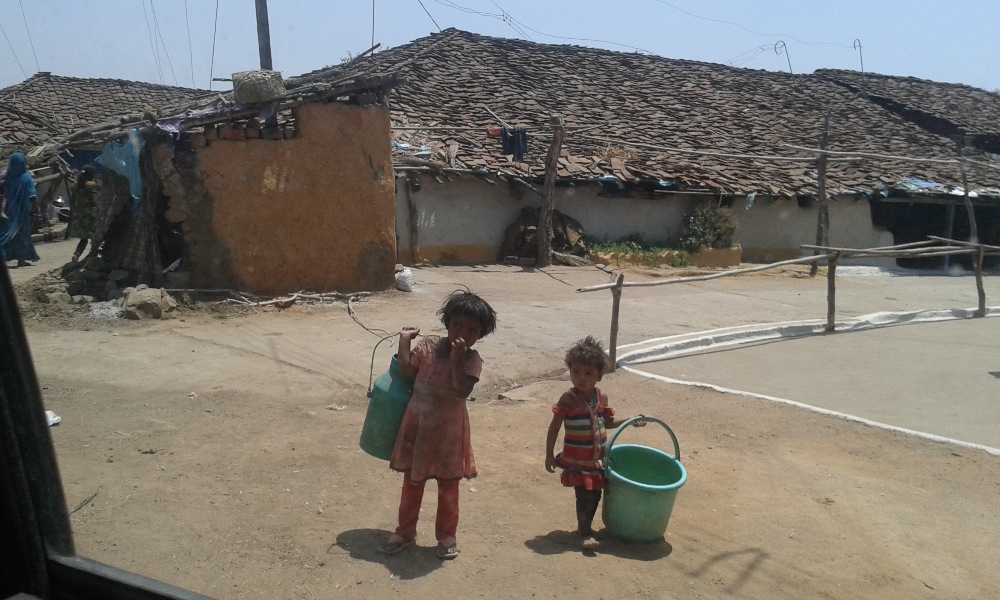
We erect plaques to dedicate our wells. I dedicated these first two to my father and put a nice message in English and Hindi for the residents. Below, locals who assisted are thanked and named in Hindi.
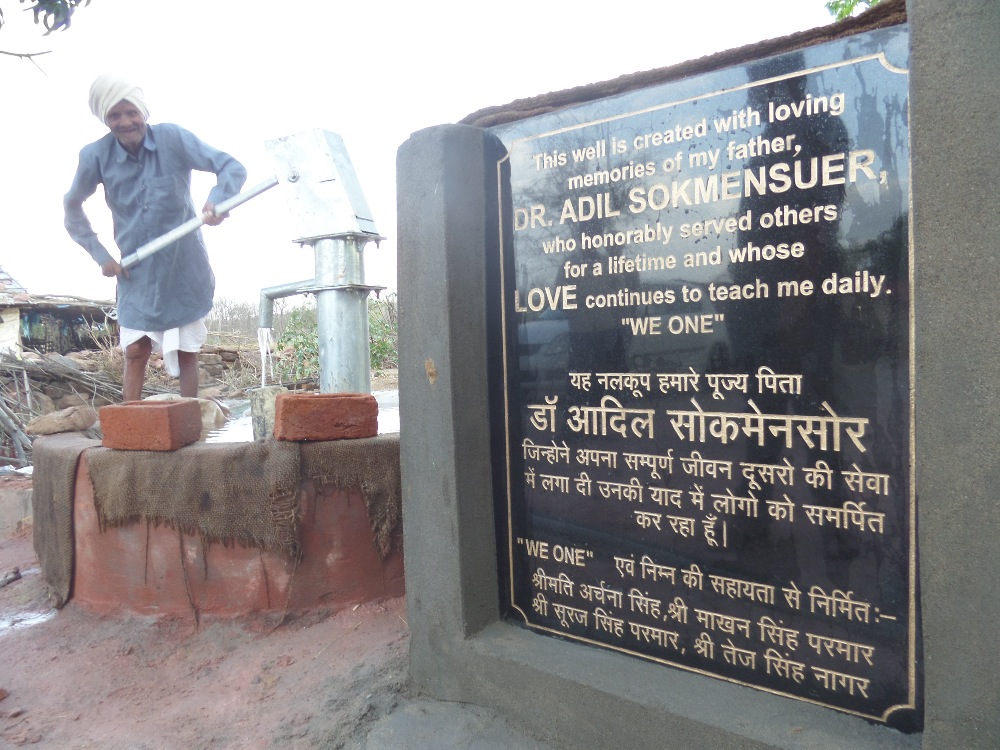
We are even able to get the pipes and pump equipment at basic cost due to their appreciation for this charitable acitivity for the poor. We are very fortunate to get these high-quality, deep wells at such a low cost.
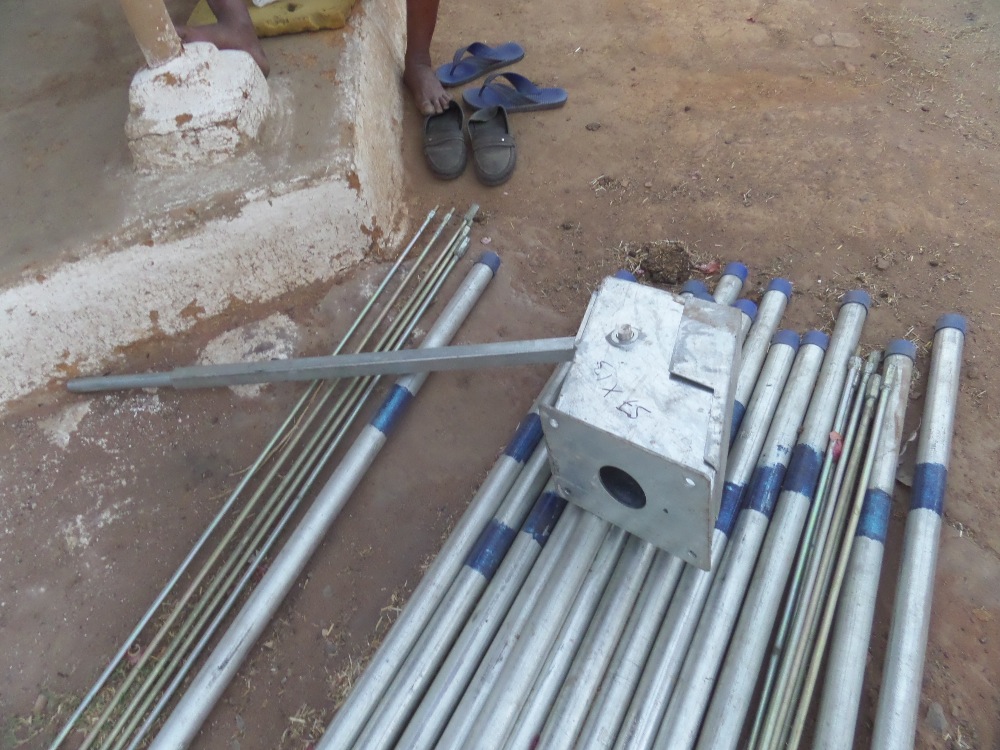
These are the troughs for the cows and a cistern which supplies the cow sanctuary and villages' hub community center.
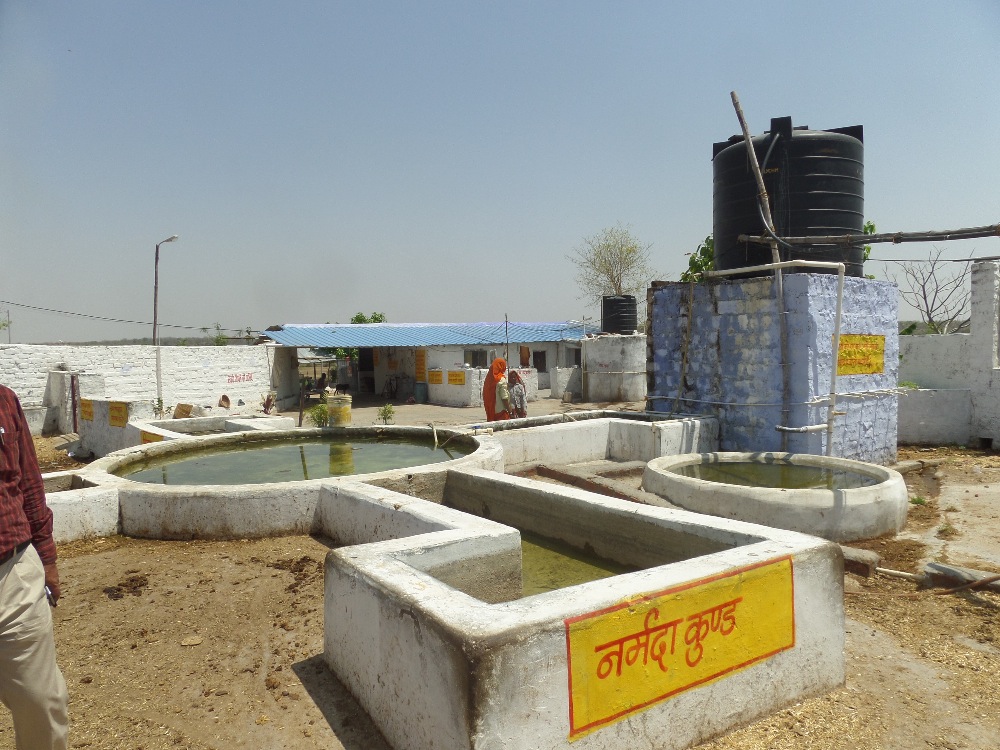
A local village mother able to clean her utensils and gather water near to her home.
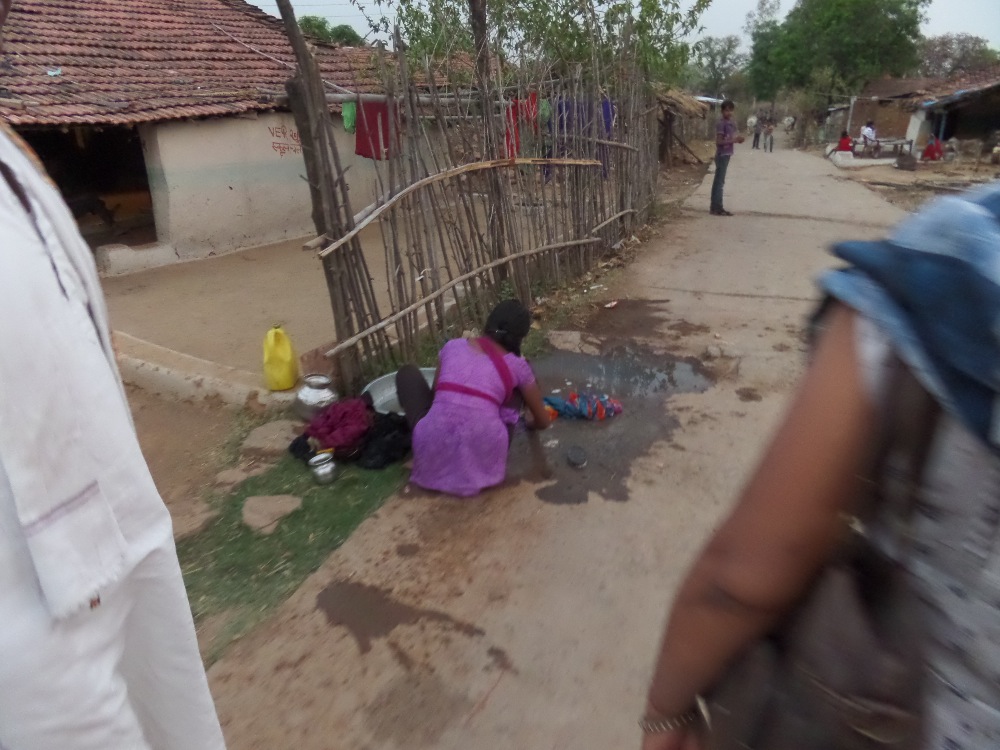
Mrs. Singh of HiGeoTech looking happy and proud after our successful well completion. The whole village is very happy about it. Imagine having to walk some large distance just for basic water collection for daily use! The villagers told me that many people come and make promises, but we were the ones who fulfilled our promises and cared for them. They said they felt forgotten by officials. One government official was impressed and slightly embarrassed by our work, and he declared that he will assist them to build a cistern.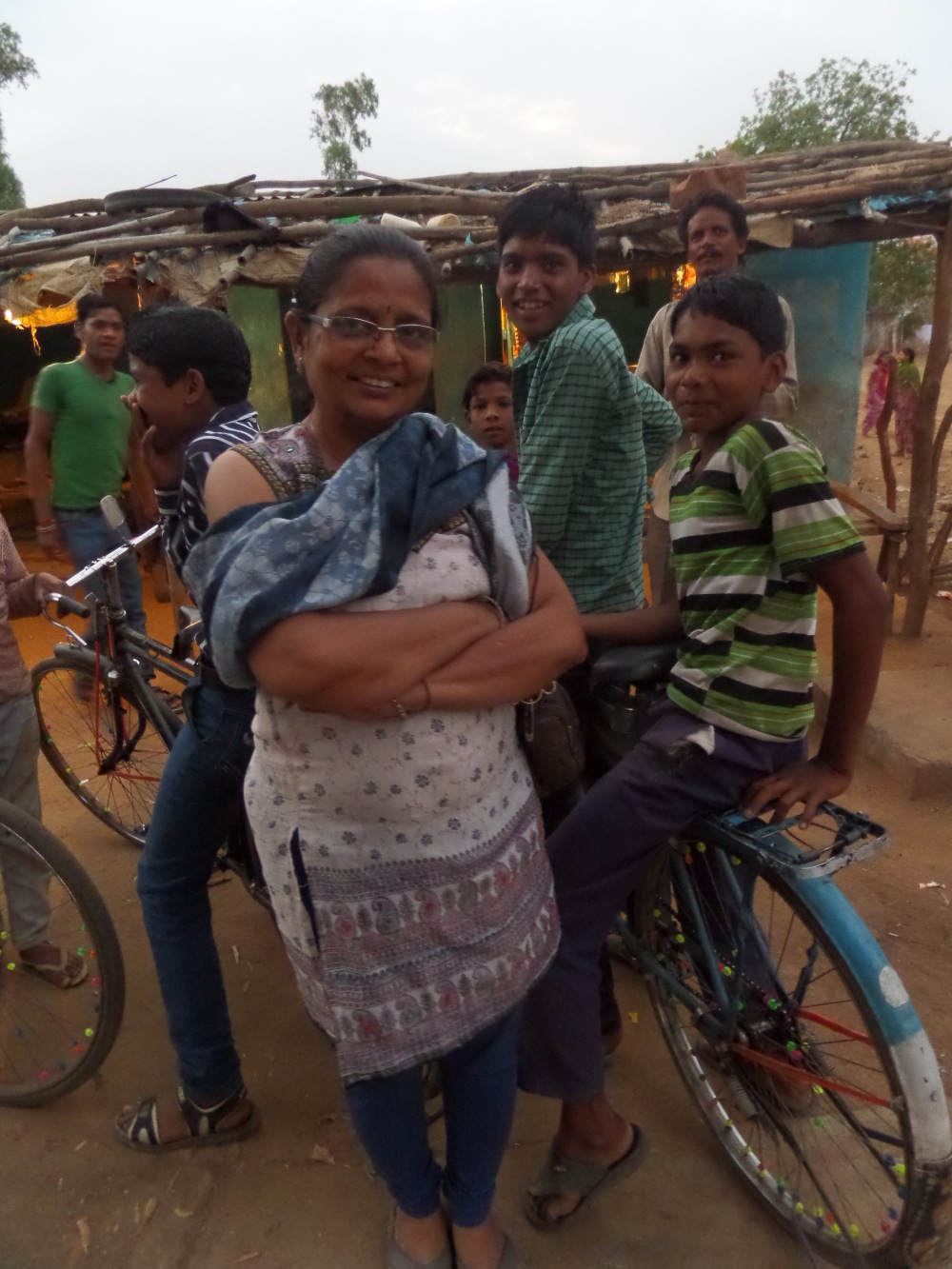
After working all night, striking water is a uniquely joyous experience. Not only can the environment be immediately transformed with the life-giving water, but after many hours of difficult work, there is a great release of celebration. It is truly a uniquely exhilirating and grateful experience when that water gushes forth.
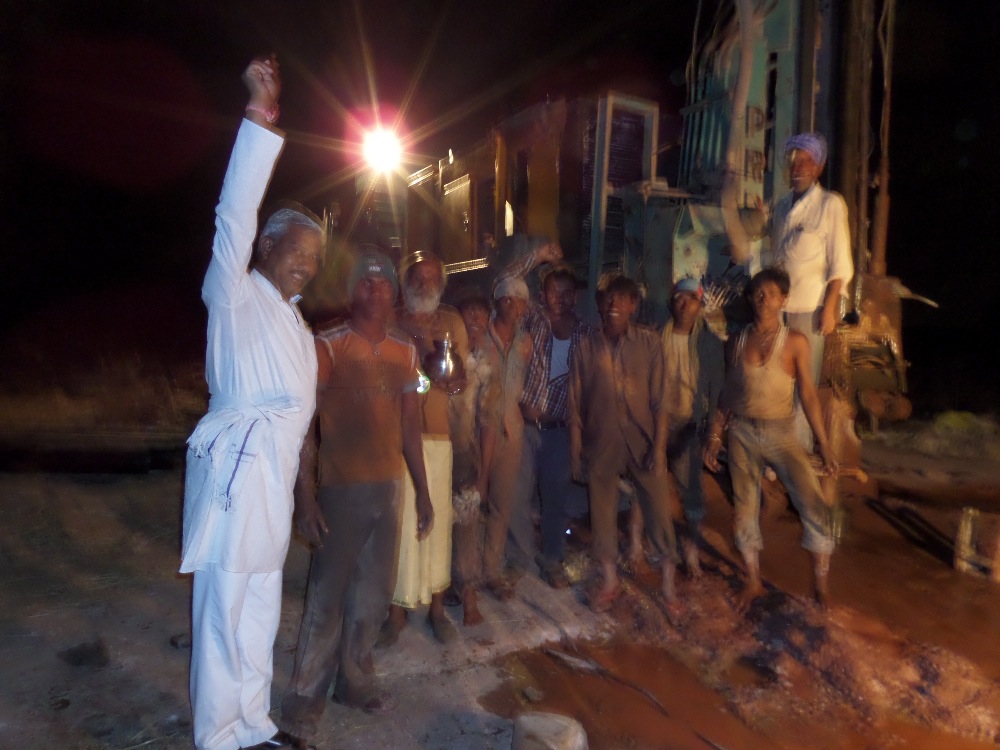
One of the happiest moments of my life. A new well providing real sweetwater for decades to come where it was once dry.
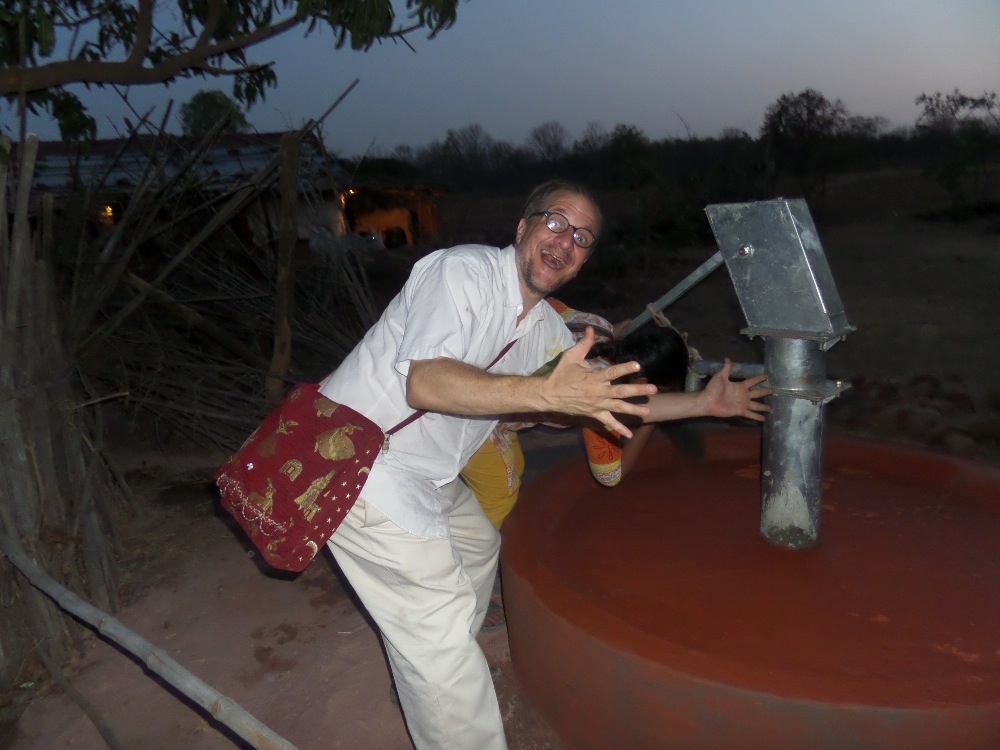
This kids saying goodbye to me.
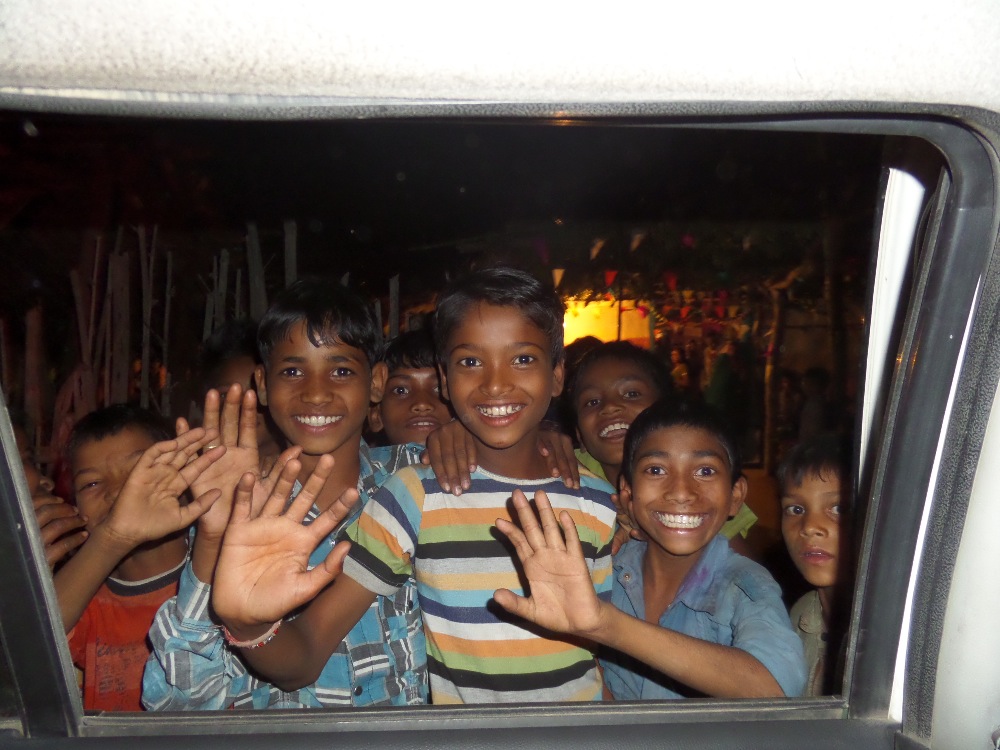 www.weone.us
www.weone.us


The photos above and below are from our last trip to Bhopal, India where we successfully completed 2 deep water wells in areas of water scarcity and emergency and placing a pump on one previously drilled old emergency well in case of electrical shortage where we provided a motorized pump. Our team has identified at least 2 locations in desperate need, one in a Bhopal slum and one in an impoverished village where WE ONE will drill at least two wells on my next trip to India in July. Of course, I would like to raise enough money to drill more than just two.
Drilling for water is very strenuous and exciting work. We work through the night when temperatures are cooler. The contractors from the government are allowed to give up drilling after 250 feet (deep, but often not deep enough). We drill up to 500 feet. That is one of the reasons people are helping us to get this done at such a low cost. We found one pure source at 250 feet deep and one at 460 feed deep. And I add, it is a true thrill when this pure water bursts forth !

Hi, My name is Kent. My friends call me Thomas. I help make these deep water wells in places of great need in India where, with friends, we are making high quality drilled wells and supply villages or farms for very, very low cost. Please compare on the internet if you feel like it. I helped make WE ONE by selling my home and gardens i worked on for a decade and love dearly. We One is a 501c3 personal foundation which performs service activities. If you are interested in making larger tax deductible donations, please send a private message. Our primary charitable activitity is providing pure water in Indian villages and slums which are under water emergency as the upper water table has become exhausted. For reference to all service activities, you can go to www.weone.us . Presently, we are working with a goverment water board scientist, local elders, farmers, villagers and other professionals in Bhopal where the water crisis is serious. Because of a devoted and favorable network of professionals and locals, and we are drilling high quality deep wells (250 to 500 feet) at the very lowest cost of averaging about $1500 per well including all expenses. Some projects include irrigation too and we split those extra costs with locals. This is about 1/2 to 1/3 what it seems to cost other NGOs.

Our network and team in Bhopal includes a government geophysicist, local elders and farming representatives, the baba who runs the villages community center and cow sanctuary, local farmers, workers and residents. Because of the cultural and local support of charitable activities concerning water projects, our drilling company is even driling at "no profit, no loss" cost which allows us to drill well at a lesser cost than the locals could do together without WE ONE and also significantly less than other NGO charities (only $1500 or less per 250 to 500 feet deep well, pump, etc.). At the farm, there were some more costs for irrigation, motors, electronics, etc.

This is the first farm created after our first well at the cow sanctuary/villages hub community center. This section of the farm is for cow fodder to feed cows as cows are central to Indian culture and provide fuel, food, medicine, and at the cow sanctuary even electricity is derived from methane. Now that the farm for cows has been established, a farm for humans, native and medicinal plants and flowers is being grown and established. When I return in July, we plan on introducing a bee colony to the farm (we will make a seperate campaign for this). This villages' community center is the location of local meetings, gatherings, mass wedding, retreats and is on the main road. A cistern is being installed to supply people driving by on the way home or to work. The field below was previously dry and mosly weeds and grasses were growing.

This is what the fields looked like before the irrigation made the growth above. This field has now become a farm for human food (I don't have pictures of it as I have been in the U.S. since it was planted).

Installing the electrical motor at the villages' hub/cow sanctuary. This was the first day. Later, this equipment was been placed in a wooden containment box constructed for the controls.


Where the field of aloe plants were dry and the aloe was pink and shrivelled from lack of water, this medicinal and nutritious plant is now flourishing. When I return, we will start experimenting with more nutrioutious staples like purple potatoes, quinoa, amaranth and brown rice to experiment with alternatives with higher nutritive value for India's enormous and expanding population.

Now the kids in the village can easily come and get water just down the little road rather than the mothers and females (it is usually their duty) having to walk what we would consider to be significant distances at least once daily to get the water for the family.


IT'S SWEETWATER ! yay! 460 feet deep !
It is nice for kids to have fresh water after playing. I am assuming this can lead to more playing since water is more easliy available. It is a beautiful and strong well. We made sure this new one was a safe distance from the side of the road. It should give water for at least 20 to 30 years. 460 feet deep, Sweetwater. That is very deep and would be expensive for this small town.

In India, girls are usually sent to fetch water. When we arrived the day after completion, This girl came to get water with a doll in her hand. After this photo, she went and picked up her toy she left on the plaque we made to thank local people (photo above) who assisted and... then she walked home.

She is holding a toy in her hand, just able to carry it on her head. Interesting.

Mrs. Archana Singh of HiGeoTech geophysics company and Dr. Singh, government water board geophysicist, are essential in our efforts and highly respected locally. This is Mrs. Singh inspecting the depth of the new sweetwater well and Javra village's new well which will provide pure water for decades.

It is beautiful! Right?

This is the dry well at the school down the street. The upper water table has been exhausted. Now the school has water just two hundred meters down the road.

This is the old broken well in center of the village. It may supply water in the coolness of winter sometimes when there is still some rainwater in the upper table, but most of the time, it is useless. It was made way to close to the road. I think a car hit it too. Maybe more than once. Where we drilled the Sweetwater well, I wouldn't leave the spot until I made sure it was being done far enough away from the road. It was an interesting twist, but the next day, the locals thanked me that I made sure it was made farther off the road... Anthropology story, the same but different but the same.

Kids fetching water from the new well just a short distance from home.

We erect plaques to dedicate our wells. I dedicated these first two to my father and put a nice message in English and Hindi for the residents. Below, locals who assisted are thanked and named in Hindi.

We are even able to get the pipes and pump equipment at basic cost due to their appreciation for this charitable acitivity for the poor. We are very fortunate to get these high-quality, deep wells at such a low cost.

These are the troughs for the cows and a cistern which supplies the cow sanctuary and villages' hub community center.

A local village mother able to clean her utensils and gather water near to her home.

Mrs. Singh of HiGeoTech looking happy and proud after our successful well completion. The whole village is very happy about it. Imagine having to walk some large distance just for basic water collection for daily use! The villagers told me that many people come and make promises, but we were the ones who fulfilled our promises and cared for them. They said they felt forgotten by officials. One government official was impressed and slightly embarrassed by our work, and he declared that he will assist them to build a cistern.

After working all night, striking water is a uniquely joyous experience. Not only can the environment be immediately transformed with the life-giving water, but after many hours of difficult work, there is a great release of celebration. It is truly a uniquely exhilirating and grateful experience when that water gushes forth.

One of the happiest moments of my life. A new well providing real sweetwater for decades to come where it was once dry.

This kids saying goodbye to me.
 www.weone.us
www.weone.usOrganizer
Thomas Kent
Organizer
Palm Beach, FL